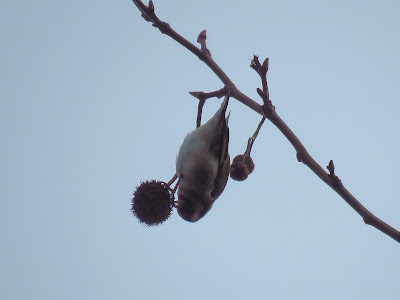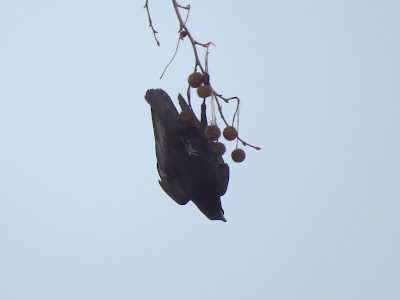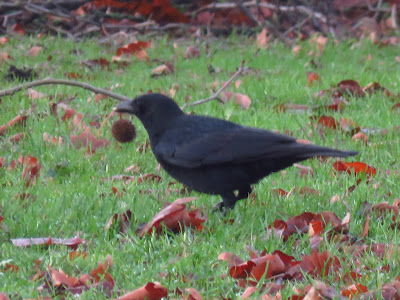I went to see the Hessle waxwings this morning, where a flock has been present since last Friday. Straight away, I saw two photographers looking at a tree. I soon joined them and the 18-strong flock was there, in a small street-lining cherry tree, facing the strong westerly wind. The light was beautiful compared to my previous Waxwing sightings, most of the time in the depths of winter. The birds were quite mobile, trilling and moving from tree to tree before descending to the unlikely source of berries this time of year: hawthorns.
No supermarket car pars, but car dealerships this time.
The 18 strong flock.
Berries, what berries?
Probably most hawthorns in the country were stripped of berries long ago. Not these. The leaves of some of them sprouting amongst last year’s crop of berries. The reason for the late berries could lay in the location of this hedge: a very narrow strip of land between the A63 and a busy local road on an industrial estate. Every time the waxwings descended to feed, roaring trucks on one side and fast delivery vans on the other, I feared for their safety. Photos don’t really convey the feeling of being there, the noise of the road and the wind, the feel of the acrid stench of the traffic fumes at the back of your throat. This stressful food location has probably kept the local thrushes and Woodpigeons away.
On the hawthorn: berries and fresh shoots.
Colour rings
Two of the waxwings had plastic rings with different colour combinations on their legs. The yellow plastic over metal of their right legs indicate that both birds are part of the 2019 ringing scheme by the
Grampian Ringing Group. In fact, information supplied by Raymond Duncan from the Grampian ringing group indicates that both birds were ringed on the 7th December 2019, in Aberdeen. One of the birds, a female with white, black and red rings stayed put until the 5th of January at Aberdeen, the other, a male with light green over dark green and dark green ring was found in Thirsk (N Yorkshire) on the 30th December and 3rd of January. Waxwings move towards the UK at the beginning of winter, in large numbers when the berry crop in Scandinavia is poor, what is called irruptions, and then they move south and east through the country. Is it coincidence that both birds are together in Hessle? Although social birds, Waxwings are not known for forming strong individual bonds when they move about during winter. However, there are reports of the same birds returning to favoured spots in different irruption years, so the same individuals may meet again in these Waxwing hotspots.
The Grampian Ringing Group has many years of experience colour ringing waxwings: they have colour-ringed thousands of waxwings for over thirty years. This winter, their dedication has paid off with 100 ringed waxwings and some resightings across the country. Their blog is a treasure trove from everything waxwing including how to sex and age them. Resightings of colour ringed birds, particularly when the colour rings and their position can be ascertained, are crucial to follow the movements of Waxwings without need to recapture them.
The male was ringed in Aberdeen in December.
Female also ringed in Aberdeen in December.
Males, females and ageing
Waxwings of different sexes and ages appear similar at first sight, but they are subtly different. Examination of their plumage pattern can actually be used to age and sex them. Adults have their primaries edged with white and bright yellow, forming a ‘hook’, while young individuals have only one side of the primaries lined with white or pale yellow. When the wing is closed this forms a single line. First winter immatures also have a shorter crest. The ‘bib’ is larger and sharper in males, while the bib edges are diffuse in females. The yellow terminal tail band is wider in males. Males have over 6 waxy red feather tips, and these are longer in adult males, but there is some overlap between sexes. Females have a small number of smaller waxy tips. Some of these features are visible in flight, so you may want to have a go at sexing and aging your waxwings from photos.
The diffuse edge of the bib indicates this is a female.
After watching the Waxwings for a while, I went to their old haunts in Priory Park at Hessle. Trees lining the road between Sainsburys and Aldi supermarkets have been removed, but their favourite berry trees, rowans, are still there, of course, there wasn't a single berry left!


































